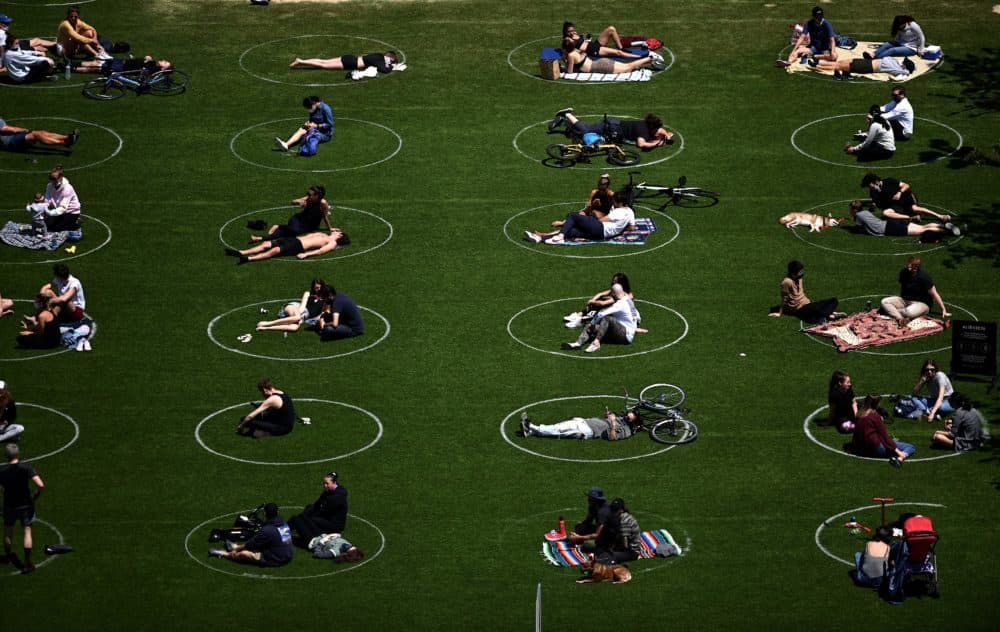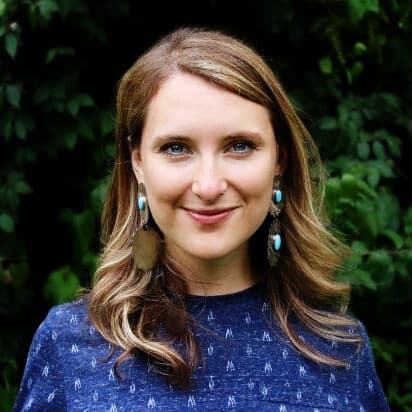Advertisement
On Point's Coronavirus Hours
From Variants To Vaccines: The Future Of COVID-19
Resume
Vaccine distribution, across the U.S. and the globe, is ramping up. But new variant cases are rising in the United States, waits for the vaccine are long, and most of us just want to know — how will this pandemic end?
Guests
Tara C. Smith, Ph.D., professor of epidemiology at Kent State University. (@aetiology)
Angela Rasmussen, Ph.D., associate research scientist at the Center for Infection and Immunity at Columbia University’s Mailman School of Public Health. (@angie_rasmussen)
Ananya Banerjee, professor at McGill University's School of Population & Global Health and the University of Toronto's Dalla Lana School of Public Health. Founder of the South Asian Health Research Hub. (@ananya_tb)
Interview Highlights
On 500,000 Americans dying from COVID-19
Angela Rasmussen: “This moment is an incredibly grim milestone from my perspective, for two reasons. First, we've actually probably underestimated the deaths. Some people have estimated that it could be as many as four to five times more deaths that have gone uncounted as a result of the COVID pandemic. And that's really a staggering number when you think about it. And that's just in the United States. The other thing that I think about all the time with regard to this number is that these deaths were mostly preventable. If we had really responded effectively at the beginning of this pandemic, we wouldn't be remembering all of these lost lives.”
Tara C. Smith: “I just keep thinking that this didn't have to happen. If we had had an effective response from the beginning or really at any point throughout 2020, this could have been so many fewer lives lost. I also think about all of the inequality that we're seeing. That this does not break down equally among racial and cultural barriers. That we are seeing many more lives lost in the Black and Hispanic community than in white folk. So that's something that we have to think about as well, that our country is still very unequal and we're seeing that, unfortunately, play out during the pandemic."
On how how the Black and Latino communities have been disproportionately affected by the pandemic
Angela Rasmussen: “I think that it's primarily systemic racism, which, of course, does lead to some environmental risk factors, it leads to incredible medical disparities that those communities have suffered. And that has led, as Tara pointed out, to a really unequal response for those communities, both in terms of their access to medical care, the quality of care that they're receiving, as well as access now to vaccines.
"We've seen already in the vaccine rollouts that there has been incredibly inequitable distribution of those vaccines to communities of color and particularly to Black, Latino and indigenous communities. So I think that this is something that has been building up really since 1619. But it is something that has really come to a head in this pandemic. And it has really revealed a lot about how far we have to go as a society.”
On what COVID variants mean for vaccine rollout
Tara C. Smith: “I think it just really emphasizes how important it is to really ramp up vaccine rollout and really encourage people to get it whenever it's available to them. So far, the vaccines that we have and also some of those that have been approved in other countries, but not here, they really all look pretty good for the variants. You know, not perfect maybe, but they should be a very adequate as far as protecting individuals from infection. So we have to get those rolled out more quickly. And also, while everyone is waiting to still continue to mask, to distance, not become complacent, because those variants are out there and they are seemingly more transmissible.”
What exactly does herd immunity mean?
Angela Rasmussen: “Herd immunity or the herd immunity threshold is the percentage of the population that is immune that will prevent a virus from spreading within that population. So this is based on the idea that all viruses need a host in order to replicate. And replicating is exactly what viruses do. That's their evolutionary mandate. They have to find a new host to replicate.
"If enough people in the population are immune, the virus can't find purchase, it can't find a new host to replicate itself in. So that's really what we are shooting for. We're trying to get to herd immunity. But that said, I don't think that herd immunity is necessarily the point at which we can go back to to living our daily lives.
"We might be able to actually do that sooner and start relaxing some of the restrictions that are in place right now if we can reduce community transmission enough along with increasing immunization. So in other words, we can look to countries like Australia and New Zealand and Taiwan that have effectively controlled transmission without vaccination.
"In Australia, they've been dining in restaurants and not wearing masks and going to the theater and gathering with their friends for months now because there is really not SARS-CoV-2 circulating in the population that can't be controlled through standard epidemiological methods like testing, tracing isolation and quarantine.
"So if we can do a combination of those things, increasing the number of people who are vaccinated while simultaneously bringing down transmission to a manageable level, we will be able to start living more normal lives before we hit that herd immunity threshold."
On the future of COVID — and COVID eradication
Tara C. Smith: “I think eradication is out of reach. Eradication means basically that it's gone from nature on the globe. So we've only done that as far as human viruses with smallpox. And it was a huge effort. I don't see that happening with SARS-CoV-2, largely because I don't think the political will will be there, but also because people can be infected asymptomatically, that I think it will be a very difficult campaign.
"We did choose to do that with polio and the asymptomatic infections are really what has made that eradication campaign very difficult. So what I expect is that it would be more like our endemic coronaviruses, that it would still be there kind of in the background.
"It will still cause infections in individuals, perhaps still cause some deaths, but at a very much lower rate than what we saw in 2020 and hopefully we'll see a declining rate in 2021 as well. But I don't think it will ever really go away. I think it will just become endemic in the human population, but something we can keep under control with vaccination."
From The Reading List
New York Times: "Does the Vaccine Stop Transmission?" — "The purpose of the Covid-19 vaccines is to prevent death and serious health complications that strain our overburdened health care system."
CNN: "As 500,000th Covid death looms, US reaches pivotal moment" — "The United States will within hours record its unfathomable 500,000th death from Covid-19 paradoxically at a moment of rare hope in the pandemic. Yet the tragic landmark will occur with the White House loath to predict when the crisis may ease as it balances critical political and epidemiological risks."
Nature: "The coronavirus is here to stay — here’s what that means" — "A Nature survey shows many scientists expect the virus that causes COVID-19 to become endemic, but it could pose less danger over time."
The Atlantic: "What If We Never Reach Herd Immunity?" — "Let’s begin by defining our terms. Herd immunity is the hazy, long-promised end of the pandemic, but its requirements are quite specific. Jennie Lavine, a biologist at Emory University, likens it to wet logs in a campfire."
Wall Street Journal: "As Covid-19 Vaccines Raise Hope, Cold Reality Dawns That Illness Is Likely Here to Stay" — "Vaccination drives hold out the promise of curbing Covid-19, but governments and businesses are increasingly accepting what epidemiologists have long warned: The pathogen will circulate for years, or even decades, leaving society to coexist with Covid-19 much as it does with other endemic diseases like flu, measles, and HIV."
The Atlantic: "A Quite Possibly Wonderful Summer" — "The summer of 2021 is shaping up to be historic. After months of soaring deaths and infections, COVID-19 cases across the United States are declining even more sharply than experts anticipated."
The Guardian: "WHO warns Covid-19 pandemic is 'not necessarily the big one'" — "World Health Organization experts have warned that even though the coronavirus pandemic has been very severe, it is 'not necessarily the big one,' and that the world will have to learn to live with Covid-19."
STAT News: "The myth of ‘good’ and ‘bad’ Covid vaccines: Why false perceptions overlook facts, and could breed resentment" — "Mike Ryan, the World Health Organization’s health emergencies director, had a conversation recently with his mother, the kind that lots of public health people are having these days, much to their dismay. Ryan’s mother was concerned about one of the Covid-19 vaccines in use in Ireland, where she lives. The one made by AstraZeneca."
New York Times: "The Future of the Coronavirus? An Annoying Childhood Infection" — "As millions are inoculated against the coronavirus, and the pandemic’s end finally seems to glimmer into view, scientists are envisioning what a post-vaccine world might look like — and what they see is comforting."
This program aired on February 23, 2021.

